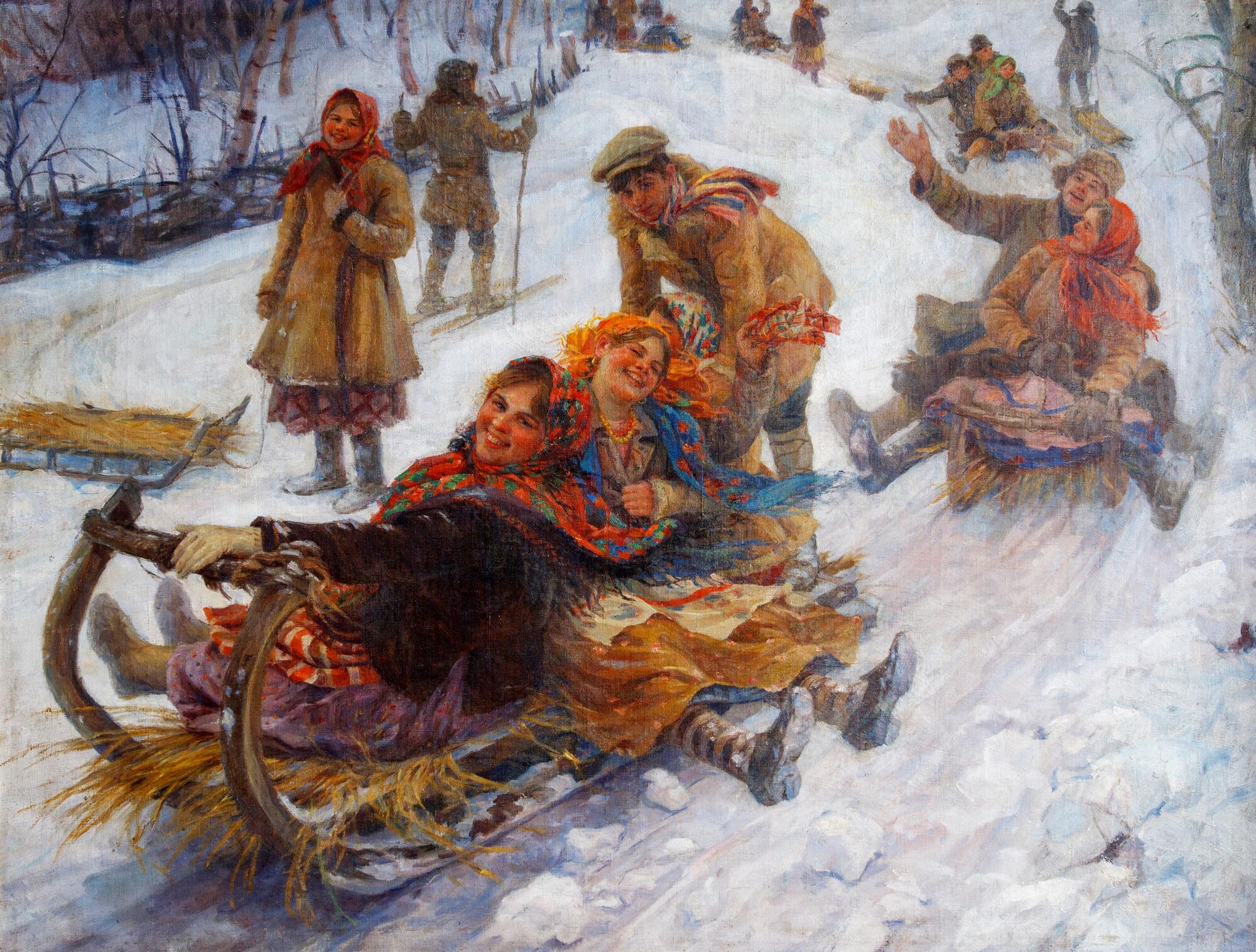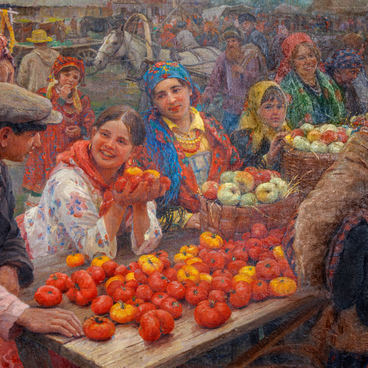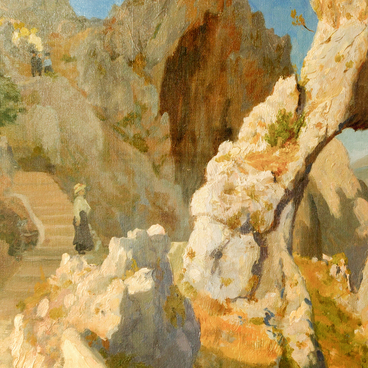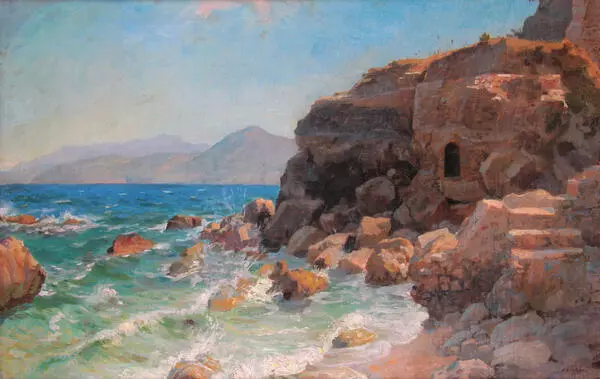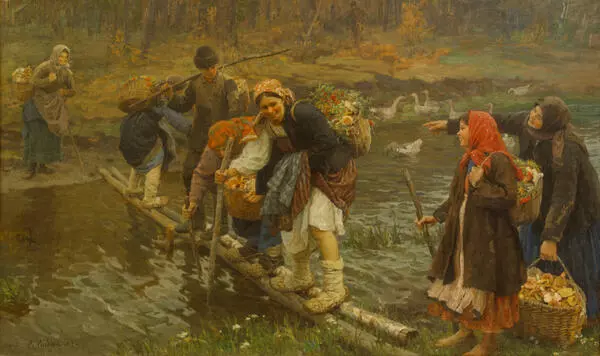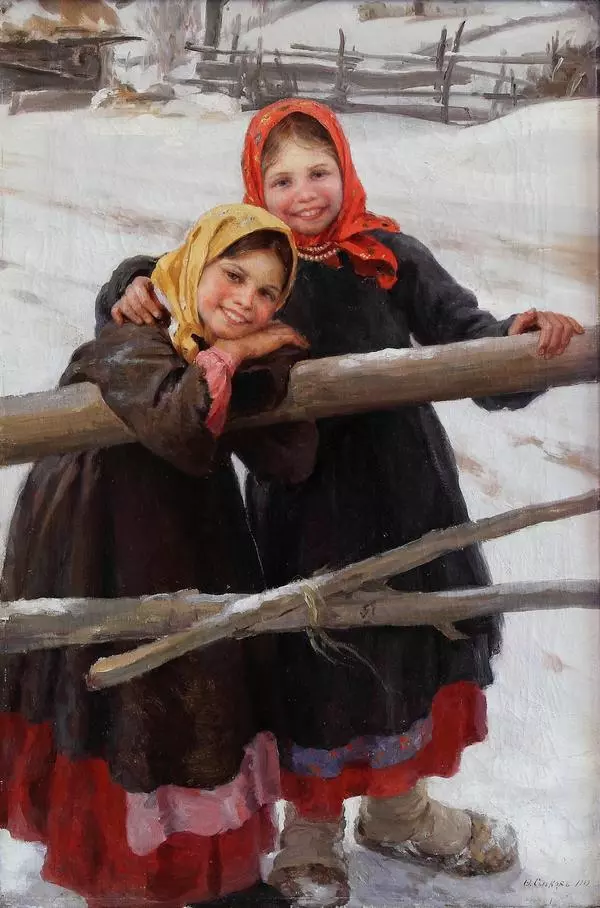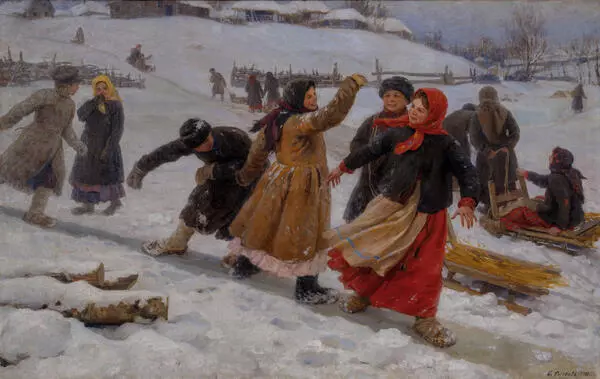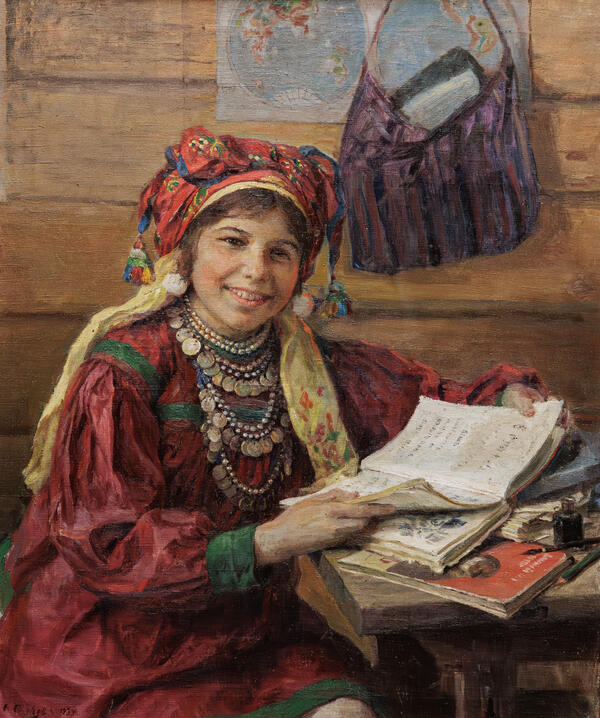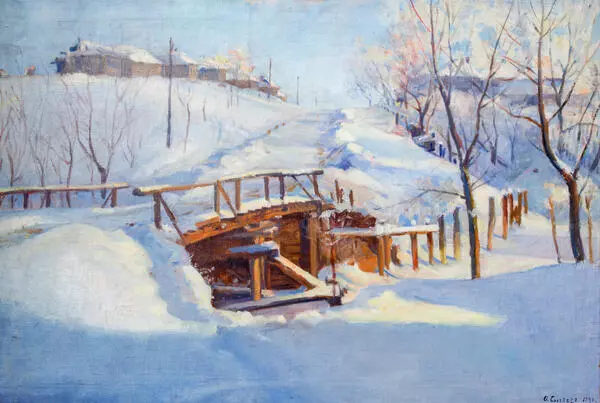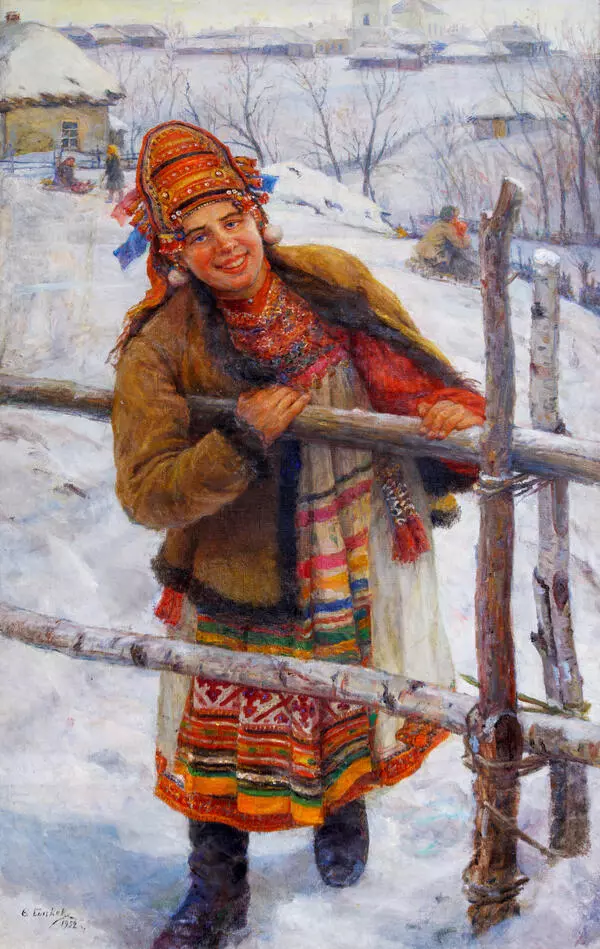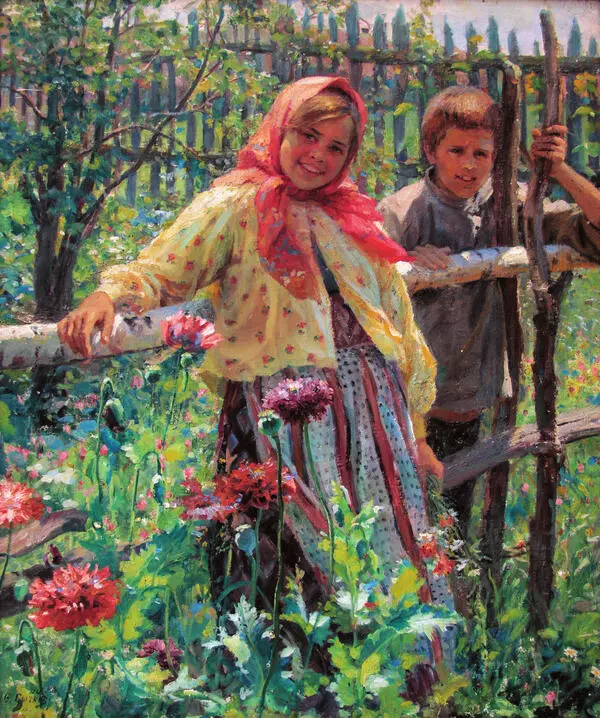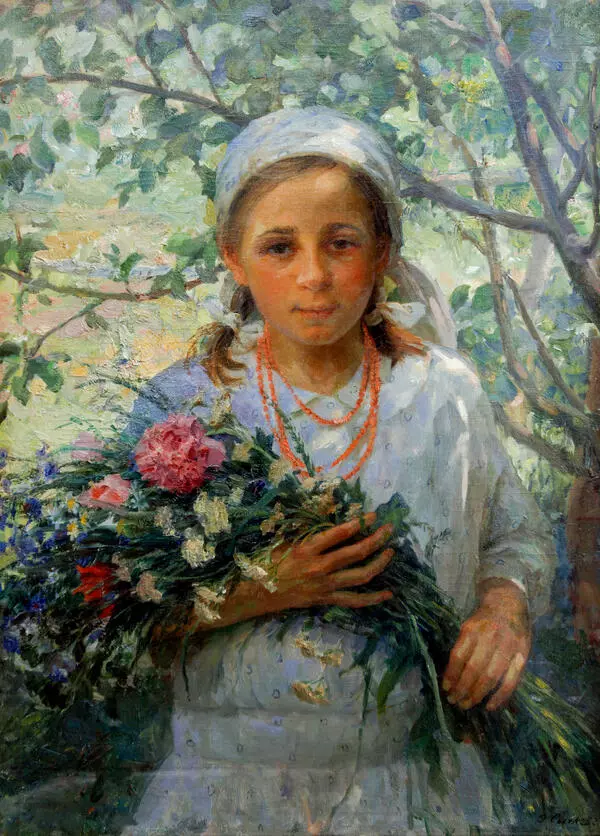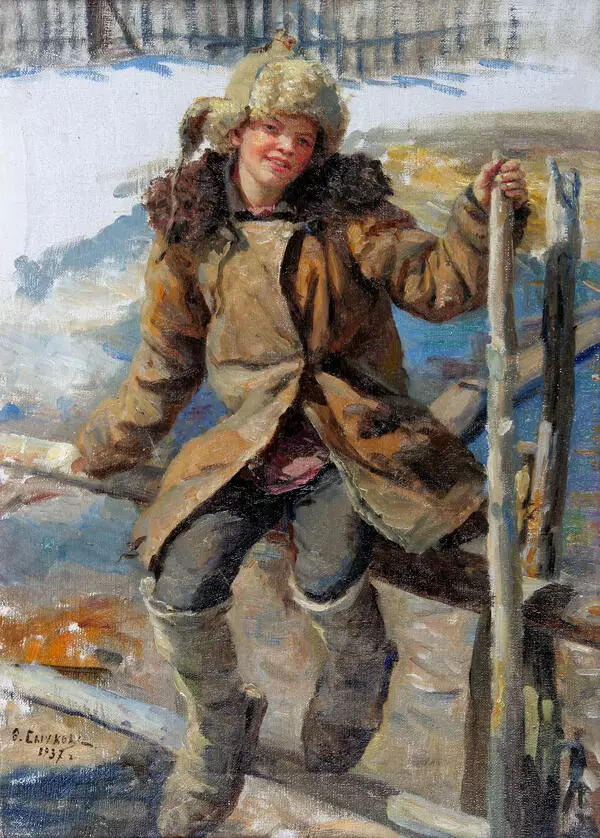In his painting ‘Tobogganing’, the artist showed festive celebrations during Maslenitsa (an Eastern Slavic religious and folk holiday). He arranged the composition to emphasize the speed of the sled going down the slide and at the same time to display the emotions of the young people.
The movement starts from the background, from the middle of the top edge. Then it continues diagonally to the front of the picture. Each sled makes a sharp turn to the left at the last moment. The master realistically conveyed the snow flying from under the sleds, the fluttering clothes, and the straw on the seats. Standing near the picture, you involuntarily want to step aside, so true-to-life the scene of the movement is.
The emotions of the characters look real. In the center of the composition, the artist captured two perky laughing girls. A lad clung to the sled from behind: he decided to slide down while standing. A little to the left, a smiling girl with a sled stopped, followed by a calm skier going up the hill. A couple of young people who are in love ride the next sled. The bright outwear of the girls and the blush of their heated faces make the picture look bright and interesting.
Fedot Sychkov, who settled in the Russian province, admired the way of life in the countryside. This experience enriched his work. In the village, he constantly drew on simple peasant subject matters that were dear to his heart. It was in Kochelayevo that the artist was able to depict with the full power of his talent.
‘I have dedicated my work to the image of the common people, ’ the painter wrote in 1952 in the November issue of the ‘Sovetskaya Mordovia’ newspaper. — ‘The heroes of my paintings are mainly the residents of the village of Kochelayevo, in the Mordovian Republic. I like to portray ordinary people, not only at work but also to show their cheerfulness, fun, games. I think this inexhaustible optimism of the common Russian people reflects their great creative power, their firm belief in a happy future…’
From the mid-1930s, a new period began in Sychkov’s work. The Union of Artists of the MASSR that was created in 1937 played a significant role in his career. Republican art exhibitions took place systematically in the capital of Mordovia, Saransk. Fedot Sychkov became an active participant of these events. At that time, he created many works that tell about the working and holiday sides of life in the Soviet village: “A Day Off at the Collective Farm”, “The Collective Farm Market”, “In the Hayfield”, “At Rest”, and “Harvest Festival”.
The movement starts from the background, from the middle of the top edge. Then it continues diagonally to the front of the picture. Each sled makes a sharp turn to the left at the last moment. The master realistically conveyed the snow flying from under the sleds, the fluttering clothes, and the straw on the seats. Standing near the picture, you involuntarily want to step aside, so true-to-life the scene of the movement is.
The emotions of the characters look real. In the center of the composition, the artist captured two perky laughing girls. A lad clung to the sled from behind: he decided to slide down while standing. A little to the left, a smiling girl with a sled stopped, followed by a calm skier going up the hill. A couple of young people who are in love ride the next sled. The bright outwear of the girls and the blush of their heated faces make the picture look bright and interesting.
Fedot Sychkov, who settled in the Russian province, admired the way of life in the countryside. This experience enriched his work. In the village, he constantly drew on simple peasant subject matters that were dear to his heart. It was in Kochelayevo that the artist was able to depict with the full power of his talent.
‘I have dedicated my work to the image of the common people, ’ the painter wrote in 1952 in the November issue of the ‘Sovetskaya Mordovia’ newspaper. — ‘The heroes of my paintings are mainly the residents of the village of Kochelayevo, in the Mordovian Republic. I like to portray ordinary people, not only at work but also to show their cheerfulness, fun, games. I think this inexhaustible optimism of the common Russian people reflects their great creative power, their firm belief in a happy future…’
From the mid-1930s, a new period began in Sychkov’s work. The Union of Artists of the MASSR that was created in 1937 played a significant role in his career. Republican art exhibitions took place systematically in the capital of Mordovia, Saransk. Fedot Sychkov became an active participant of these events. At that time, he created many works that tell about the working and holiday sides of life in the Soviet village: “A Day Off at the Collective Farm”, “The Collective Farm Market”, “In the Hayfield”, “At Rest”, and “Harvest Festival”.
